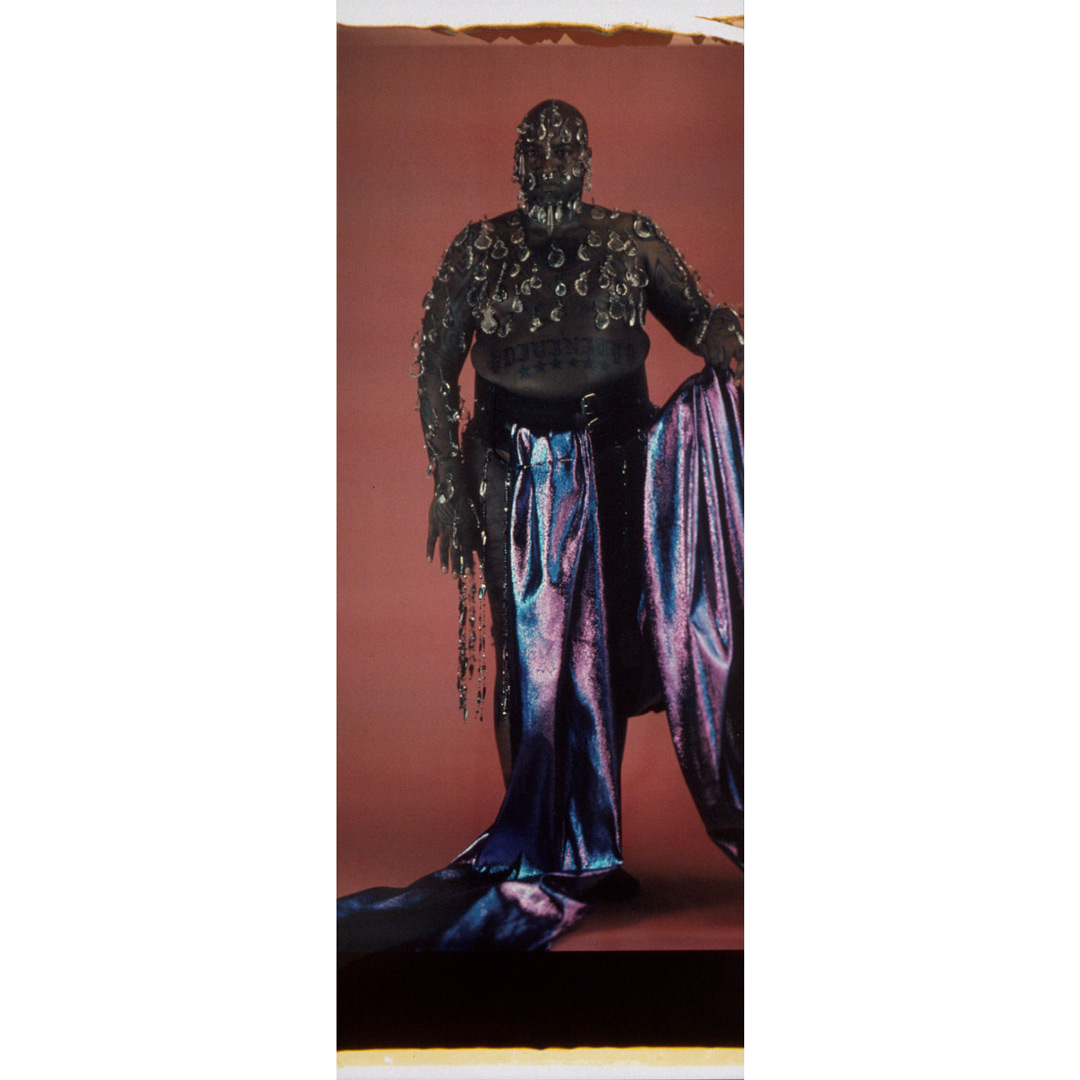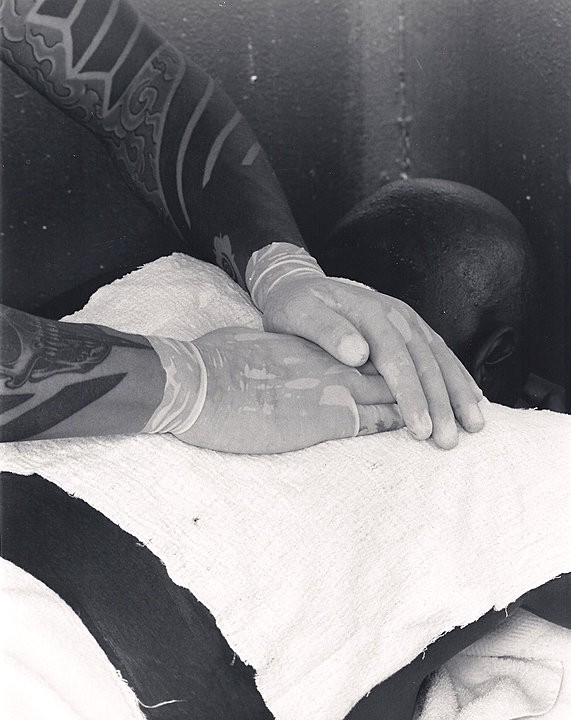Object of the Week: Untitled, Divinity
This image by Catherine Opie contains within it a number of seemingly oppositional elements: freedom and constriction, embellishment and erasure, intensity and ease, pain and restraint. The subject of the portrait, Divinity Fudge (born Darryl Carlton), stands with confidence, gracefully—if not stoically—lifting the opulent purple fabric that drapes his body, chandelier crystals embedded in his skin.
Over the course of her thirty-year career, Opie has photographed a number of American individuals and communities—most notably her lesbian and S&M leather community—and Untitled, Divinity is one of a larger series of photographic works by the artist, created in 2000 for the Estate Project for Artists with AIDS. Conceived in 1991 by the Alliance for the Arts in New York, Estate Project was established as an advocacy effort aimed at addressing “the protection of America’s cultural heritage during the AIDS crisis.”[1] Opie was among a number of artists commissioned by the organization to create artwork for the cause, and the result was her Polaroids series. The 13-Polaroid series, dedicated to her friend and artist Ron Athey, benefited the Estate Project organization, and half of the proceeds went to an artist living with AIDS. For Opie, “The whole project was a tribute to Ron and his S/M performance work.”[2]
In his performance practice, Athey employs S&M techniques and body modification to explore pain, trauma, transformation, and “allegorize the experience of survival, anger, and loss during the first decades of the AIDS crisis.”[3] Divinity, who is featured in two other photographs in the Polaroids series, appeared frequently in Athey’s work, such as the 1994 performance at the Walker Art Center—Four Scenes in a Harsh Life—which gained much national attention and notoriety. In a scene titled “Human Printing Press,” Athey cut 1 1/2 inch patterns into Divinity’s back. Impressions of Divinity’s wound were poetically transformed into prints on paper towels, which were then placed on a clothesline pulley and extended over the audience.[4]
In the Opie’s own words, “The 13 images in the series work as a journey through the ideas, actions and personas in [Ron Athey’s] performances, little vignettes from larger parts of Ron’s work. . . . The whole cast is not there, but the relationship with Divinity Fudge, who has performed with Ron for the past decade, is represented. There are images that I make in the series that have nothing to do with the performances, but act as pauses, offstage for a moment.”[5] Untitled, Divinity is one such offstage beat.
A master at capturing subjects as diverse as high school football players, lesbian families, surfers, freeways, and mini-malls, Opie has redefined American photography. Dedicated to expanding notions of queer identity—especially its subcultures that are too often misunderstood and overlooked—Opie’s project aims to highlight the beauty of this community as well as the importance of our individual differences.
– Elisabeth Smith, Collections Coordinator

